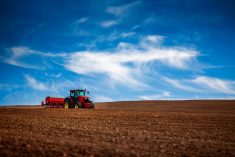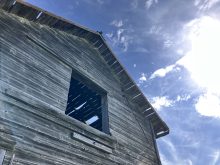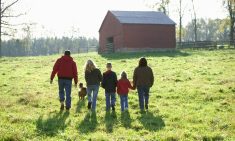Most of us barely know what our forelock is, let alone how to tug it when we bow to the lord and lady of the manor. Nor do we know how incredibly close we came to having a landed aristocracy in Canada.
All of us do sometimes wonder, however, if we could be evolving back into an agriculture all too much like the old days.
It’s hard for us to realize today that after the American War of Independence, the prevailing opinion in England was that the United States was bound to fall apart. Even many Americans had their doubts.
Read Also

Farmland values: assumptions and realities
Where farmland values are headed and what decisions farmers should make
Really, there was barely such a thing as the United States at all. For most purposes in the early years, it was more like an ad hoc collection of 13 squabbling states.
It’s hard too for us to realize that among the powerful in England, many felt the big mistake the English had made with the Americans had nothing to do with the Stamp Act or the Boston Tea Party. It was that the English hadn’t set up an American aristocracy to keep the populace in order.
It’s why the British plotted a grand strategy. They would begin by transforming Upper Canada into a kind of monarchial heaven on earth, making the Americans so envious that they would clamour to be let back into the empire.
For those who know Canadian history, this is how Ontario got the up-and-coming Sir John Graves Simcoe as its first lieutenant-governor in 1791, when he was given the job of making the Americans second-guess their revolution.
Lord Grenville, the English secretary of state who appointed Simcoe was also clear that Simcoe should establish a group of large landowners as Canada’s first hereditary aristocrats. As Grenville said, men of all stripes are slaves to titles of distinction.
The history is controversial and endlessly fascinating, but what happened in the end is that the ordinary settlers said they would have none of it. On the farms and in the backwoods, they learned every day that on this side of the Atlantic, the critical thing was their own strength and courage, not someone else’s idea of their social standing.
Does this story have direct parallels to today, when every neighbourhood has a few farm families that are amassing huge land bases, and when there are so many rumours of off-shore and non-farm investors buying up massive chunks of Canadian farmland?
Will they become the aristocrats that other farmers will have to bow before?
Clearly, you can get carried away with such analogies, but there is a new uncertainty about the long-term future of agriculture. We know there will be money to be made. We just aren’t quite sure whose pockets the money will end up in.
We’ll talk more about agriculture’s future in coming issues, but for now, a good place to start is with the stories in this issue of Country Guide, starting with Gerald Pilger and continuing right through to our columnists in the back.
Let us know if we’re helping. You can reach me at 519-674-1449, or email me at [email protected].















